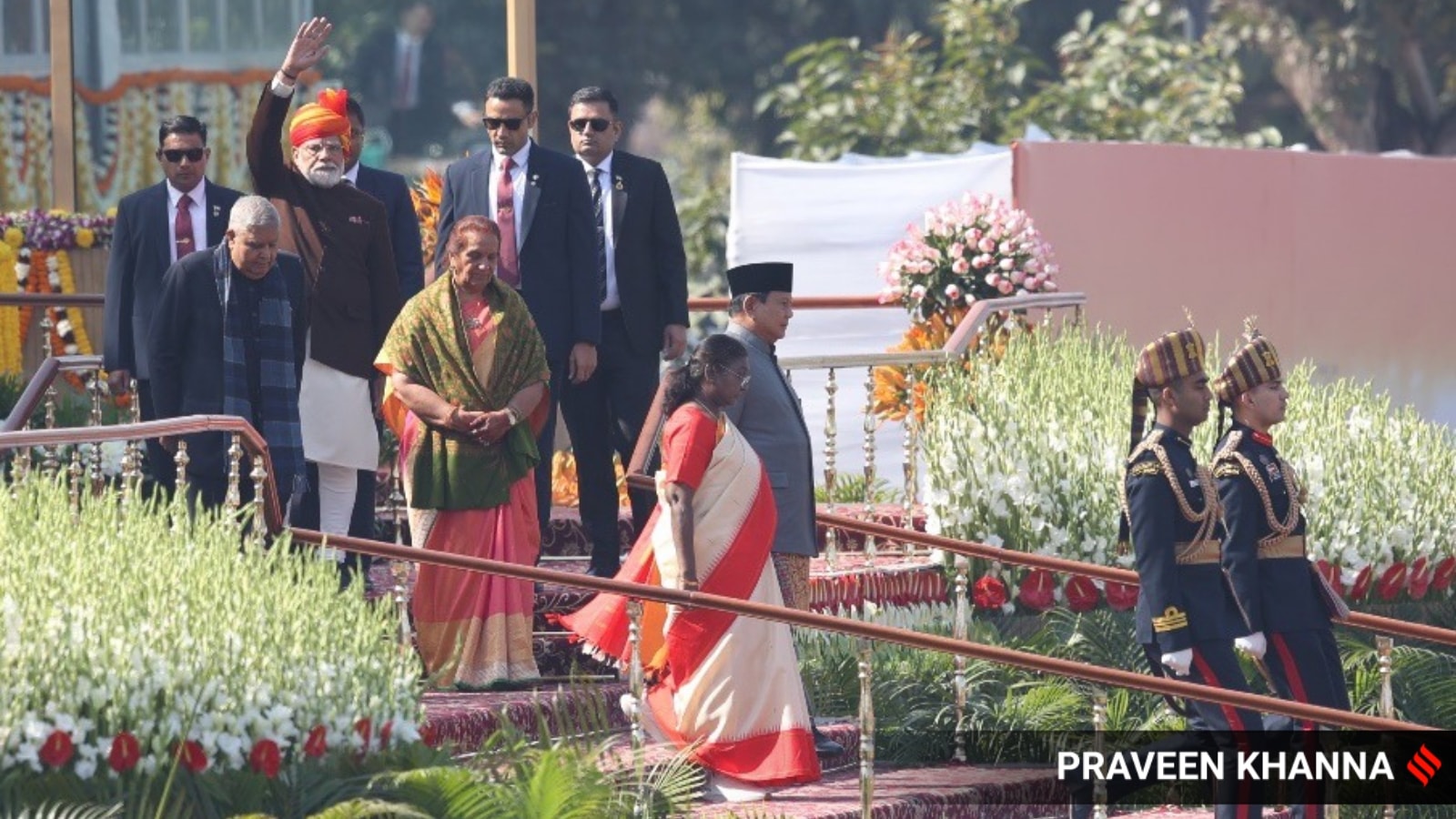 |
|
India's 76th Republic Day celebrations unfolded on Sunday, marking a significant milestone – the platinum jubilee of the Constitution's enactment. The grand event, held at Kartavya Path in New Delhi, was presided over by President Droupadi Murmu, with Indonesia's President Prabowo Subianto gracing the occasion as the chief guest. This choice of chief guest reflects India's growing diplomatic ties with Indonesia and its strategic importance in the Indo-Pacific region. The presence of a foreign head of state underscores the international recognition and prestige associated with India's Republic Day celebrations. The day's events began with a solemn tribute to India's fallen soldiers, a poignant reminder of the sacrifices made to secure the nation's freedom and sovereignty. Prime Minister Narendra Modi's visit to the National War Memorial to pay his respects is a powerful symbol of national gratitude and remembrance. This act serves to honor not only those who perished in combat but also the enduring spirit of sacrifice that underpins India's national identity. The meticulously planned ceremony provided a captivating spectacle of military might and cultural richness, showcasing the nation's progress and resilience. The parade itself, a carefully choreographed demonstration of military prowess and national pride, served as a highlight of the Republic Day celebrations.
The Republic Day parade itself was a complex logistical operation involving thousands of participants. The participation of various branches of the Indian armed forces, from the army and air force to the navy, showcased the nation's military capabilities and technological advancements. The parade also included vibrant cultural performances, highlighting the diverse artistic traditions found across India's many states and regions. These performances offered a glimpse into the country's rich tapestry of customs, dances, and music, reinforcing a sense of national unity in diversity. The inclusion of handloom artisans, sarpanches from high-performing villages, and forest and wildlife conservation workers among the nearly 10,000 special guests highlighted the government's commitment to recognizing and celebrating the contributions of ordinary citizens to nation-building. This inclusive approach served to broaden the appeal and significance of the Republic Day celebrations, incorporating elements beyond the strictly military or political aspects of governance.
The presence of various dignitaries, including Vice President Jagdeep Dhankhar, Defence Minister Rajnath Singh, and the chiefs of the three armed forces, underscored the importance of this national event. Their attendance symbolized the unity and solidarity of the nation's leadership in commemorating this momentous occasion. The significance of Republic Day extends beyond a mere ceremonial parade; it represents a time for national reflection and reaffirmation of the values enshrined in the Constitution. The platinum jubilee added a special layer of significance, prompting a renewed focus on the principles of democracy, justice, liberty, and equality upon which the nation was founded. The celebrations offer a platform for promoting national unity, patriotism, and a shared sense of purpose. By showcasing both the military strength and cultural heritage of India, the Republic Day parade aims to inspire national pride and a sense of collective identity among the citizens. The event provided an occasion for the nation to celebrate its past achievements while looking forward to its future ambitions, reflecting on the progress made and the challenges that lie ahead.
Beyond the ceremonial aspects, the Republic Day celebrations also served as an important platform for international diplomacy. The presence of the Indonesian President as the chief guest strengthened bilateral relations and reinforced India's standing on the global stage. Such high-profile international participation highlights India’s growing influence in global affairs and its commitment to fostering strong diplomatic partnerships. The event acts as a powerful symbol of India’s position as a major player in the international arena. The carefully orchestrated event, combining military displays with cultural performances, successfully projected a strong image of India to both domestic and international audiences. The careful selection of the chief guest and the diversity of participants emphasized the multifaceted nature of India's national identity. Looking forward, the Republic Day celebrations will continue to play a vital role in reinforcing national unity, pride, and the democratic principles that underpin the Indian nation. The annual event serves as a powerful reminder of the nation's progress and its commitment to safeguarding its sovereignty and cultural heritage.
